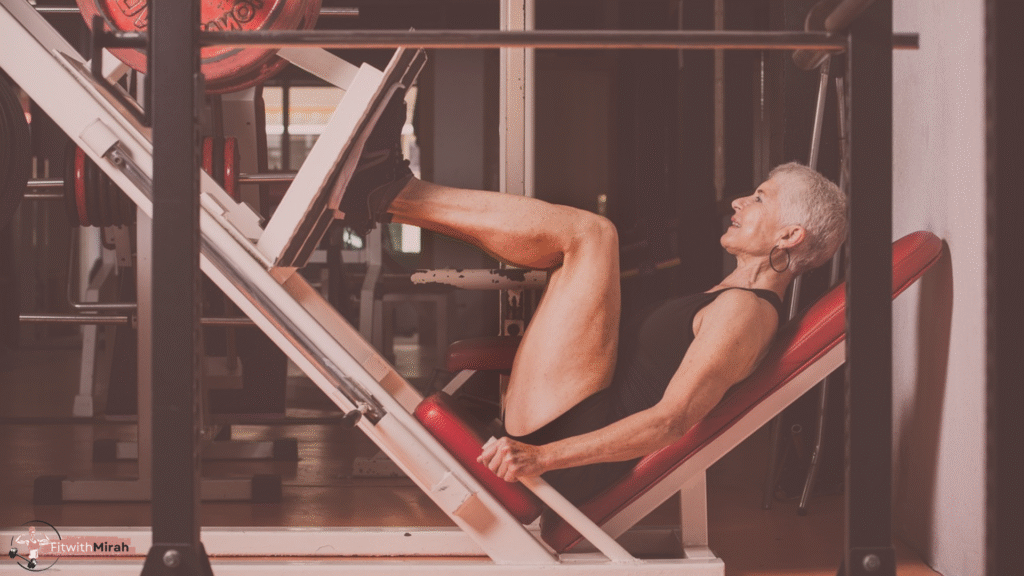Senior Fitness: How to Stay Strong, Active, and Independent

Most people believe getting older means slowing down, losing strength, and giving up the things they love. But what if turning 70 wasn’t the beginning of decline, it was the start of a stronger, more independent chapter?
Staying fit in your 70s isn’t just possible, it’s powerful. With the right kind of movement, you can build strength, prevent injury, and enjoy more energy than you’ve had in years. You don’t need fancy equipment or long hours at the gym. You just need a plan that respects your body, supports your goals, and fits your lifestyle.
Let’s break it down together.
Read also: The Ultimate Beginner’s Guide to Fitness
Why Senior Fitness Matters More Than Ever?
Aging is inevitable — but losing strength and independence doesn’t have to be.
After the age of 30, we naturally begin to lose muscle. By the time we reach 70, many people have lost up to 30% of their muscle mass. This can lead to:
- Poor balance
- Falls and fractures
- Trouble with daily tasks (climbing stairs, carrying groceries, standing up)
- A loss of confidence
But here’s the truth: muscle loss is preventable — and even reversible. With smart movement, you can stay strong, mobile, and full of life well into your 70s, 80s, and beyond.
Benefits of Staying Strong at 70+:
- Reduced risk of falls and injuries
- Improved posture and balance
- More energy for everyday activities
- Better sleep and mood
- Greater independence and confidence
Mindset First: You’re Not Too Old
One of the biggest obstacles to fitness after 70 is mindset.
Too often, we hear:
- “I’m too old to start now.”
- “Exercise is dangerous at my age.”
- “I have arthritis, so I can’t do much.”
Let’s flip that script.
Your body responds to movement at any age. Studies show that seniors in their 70s and 80s can build new muscle, improve bone density, and increase energy — often faster than expected. It’s never too late to take care of your body. Starting now is better than never starting at all.
The 3 Pillars of Strength at 70+
To build and maintain strength, you need more than one type of exercise. Here’s the simple framework that works best for seniors:
1. Strength Training (2–3 times per week)
Why it matters: Strength training prevents muscle loss, improves posture, and helps with daily movements like standing, walking, lifting, and getting out of chairs.
Exercises to start with:
- Chair Squats: Build leg and glute strength
- Wall Push-ups: Strengthen chest and arms
- Step-Ups: Improve balance and coordination
- Resistance Band Rows: Strengthen upper back and improve posture
- Seated Shoulder Press (light weights or bands): Builds shoulder stability
Tips:
- Focus on form, not speed
- Start with 1 set of 8–10 reps and increase as you feel stronger
- Use a sturdy chair, wall, or support if needed
Read also: Strength Training for Women: Why You Won’t Look Like a Man?
2. Cardio (3–5 times per week)
Why it matters: Cardio improves heart health, circulation, and overall stamina.
Senior-friendly cardio options:
- Walking (indoors or outdoors)
- Low-impact dancing
- Swimming or aqua aerobics
- Cycling on a stationary bike
- Marching in place while watching TV
Aim for 20–30 minutes a day, and split it up if needed (e.g., 10 minutes in the morning, 10 in the evening).
Read also: How does Dancing Improves Mental Health?
3. Flexibility & Balance Training (daily)
Why it matters: Flexibility keeps your joints mobile, while balance training prevents falls — the #1 cause of injury in seniors.
Try:
- Standing Leg Lifts
- Heel-to-Toe Walk
- Chair Yoga or Stretching
- Tai Chi
- Single-leg balance (with support nearby)
Start small, 5–10 minutes a day. Consistency makes the difference.
Common Challenges and How to Beat Them:
“I have arthritis or joint pain.”
Try low-impact movement like swimming, cycling, or seated resistance training.
“I get tired quickly.”
Shorter, more frequent sessions (10–15 minutes) can be more effective and less tiring.
“I don’t feel motivated.”
- Track your progress (steps, reps, strength)
- Set small, specific goals (e.g., walk to the mailbox daily, stand up without help)
- Join a community class or invite a friend to move with you
Final Thoughts
You are not too old, too fragile, or too late.
You are capable, strong, and ready — exactly as you are.
Senior fitness isn’t about perfection or pushing yourself to the limit. It’s about consistency, compassion, and creating a lifestyle that supports your independence.
Start with one move. One walk. One moment of strength.
Because staying strong at 70 doesn’t mean chasing youth — it means owning your future.
